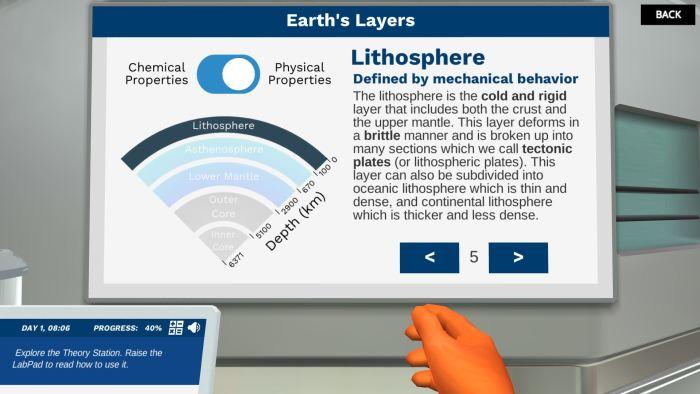
The Earth’s surface is ever-changing and diverse. It owes this diversity to the intricate drivers of plate tectonics. Beneath our feet, colossal slabs of rock engage in perpetual movements and shifts that are fuelled by convection currents and Earth’s internal heat. These forces have sculpted mountains, trigger earthquakes and carve oceans which reveal the mesmerizing interplay of chemical and physical properties within Earth’s layers. Unveiling the mysteries of plate tectonics not only deepens our understanding of Earth’s past and present but also holds the key to deciphering its future. As students explore this captivating subject, they are challenged by multiple factors.
To help educators plan well-organized lectures on the subject, we have compiled some resources here. The underlisted 5 innovative ways can be a game-changer for you and your students.
By utilizing interactive models and simulations, educators can kindle a fire for understanding Earth’s intricate dynamics and drivers of plate tectonics. By delving into the depths of convection-driven plate tectonics, learners will be able to unveil the variety of forces sculpting our planet’s ever-changing landscape. You can utilize interactive models and virtual platforms where students can witness and discern how these plates glide and collide beneath Earth’s crust prompted by underlying forces. Simulative learning environments also depict convection currents effectively.
While it is physically impossible to go deep inside the Earth’s mantle to see how it works, Labster’s Simulation offers a way in which students can observe heat-driven material circulation within the Earth’s mantle and comprehend its role in continental drift. Learners can delve into Earth’s layers, manipulate parameters and observe how chemical composition and physical properties interact and influence plate movements and Earth’s surface evolution.
Through inventive gamified methods, educators can spark an unquenchable curiosity for Earth’s mechanisms of tectonic plate movements. Merging playfulness with scientific rigor offers a wonderful avenue for learners to understand complex topics like major driving forces of tectonic plate movements, continental drift, convection-driven tectonics, etc.
As educators, we can craft puzzle games and challenges where students arrange tectonic plate pieces to unravel how their ceaseless motion stems from underlying forces and convection currents within the Earth’s mantle. There is scope to develop virtual games simulating Earth’s convection currents which can be helpful for learners as they can manipulate variables like temperature and viscosity and thereby observe the resulting material flow and its effect on tectonic movement. Alternatively, you can employ Labster’s Convection Currents Virtual Game where students can heat different types of materials and assess their impacts.
By seamlessly intertwining technology, educators can simplify the core ideas of plate tectonics and its underlying driving forces. The employment of technology in geosciences education can cultivate a generation of astute minds equipped to decipher the enigmatic drivers sculpting our ever-evolving planet. You can plan to infuse technology in a variety of ways.

Discover Labster's Driver of Plate Tectonics virtual lab today!
Educators can forge a meaningful connection between the subject of plate tectonic drivers and exciting career pathways to spark students’ passion and ingenuity to learn. From geophysics to environmental advocacy, each topic reveals a unique trajectory that can cater to and nurture the varied interests of the new generation and help them make meaningful contributions to the mitigation of hazards and pioneering transformative solutions.
A wonderful career in Geophysics is one of the first recommendations. You can showcase how understanding tectonic plate movements propels geophysicists to predict earthquakes and ultimately mitigate their catastrophic impacts. Students with such interests can delve into seismic data analysis and hone their skills to contribute to disaster management agencies. You can underscore the importance of geothermal energy sources and highlight how knowledge of Earth’s internal heat sources drives careers in geothermal energy and sustainable power generation, thereby contributing to renewable energy advancements.
By connecting the topic of drivers of plate tectonics with real-world applications, educators can inspire students to learn its core ideas with interest. By discussing the pressing global challenges through the lens of Earth’s dynamic processes, educators can bridge the existing chasm and fuel students’ motivation to bring out a larger societal impact through education. Some of the ways to do this are:
The drivers of plate tectonics orchestrate Earth’s geological landscape. Employing innovative tools is vital when educating learners about the topic to bring clarity and rationality to the subject. With a will to make a change, educators can nurture a generation equipped to fathom the world’s past, shape its present, and craft its resilient future. Labster supports educators in their endeavor by providing informative and learner-friendly simulations with gamified learning options to ease the science underlying tectonic movements.

Try our free 30-day All Access Educator's Pass today and teach with the Drivers of Plate Tectonics simulation alongside 300+ other virtual labs!

Labster helps universities and high schools enhance student success in STEM.
Request DemoRequest a demo to discover how Labster helps high schools and universities enhance student success.
Request Demo